Stay On Track for Success with Universal Screening
Student performance and needs change throughout the year, that’s why FastBridge provides research-based universal screening tools to pinpoint shifts and react with the right support the moment it’s needed.
The right universal screening tool should provide key information to departments, teams, and roles. By using FastBridge, districts save dollars, testing time, and professional development hours while consolidating systems and reporting.
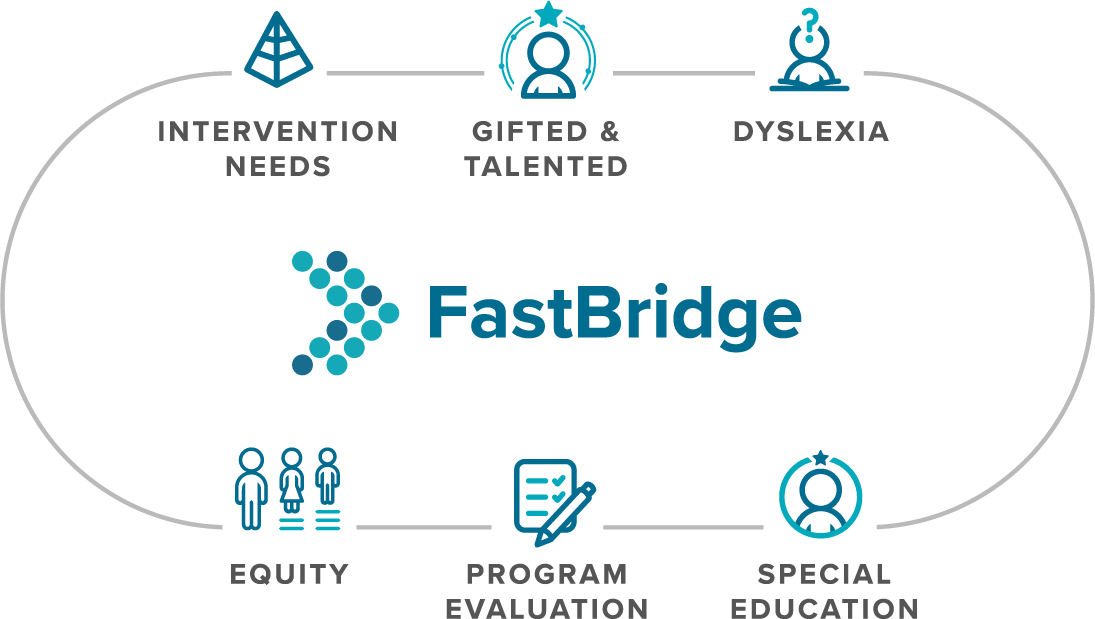
FastBridge is the only system to offer both Curriculum-Based Measures (CBM) and Computer Adaptive Tests (CAT) for reading, math, and social-emotional behavioral (SEB). Our combined universal screening approach improves the reliability and validity of decisions by giving teachers more accurate data about student learning faster than any other system.
What is a CBM?
Our Common Core-aligned CBM applies cutting-edge R&D to ensure accurate and actionable data inform interventions and provide targeted supports at the right time. Backed by research from Dr. Theodore J. Christ and his team at University of Minnesota, our universal screening tools employ brief, evidence-based probes that are highly sensitive to growth to ensure validity and reliability.
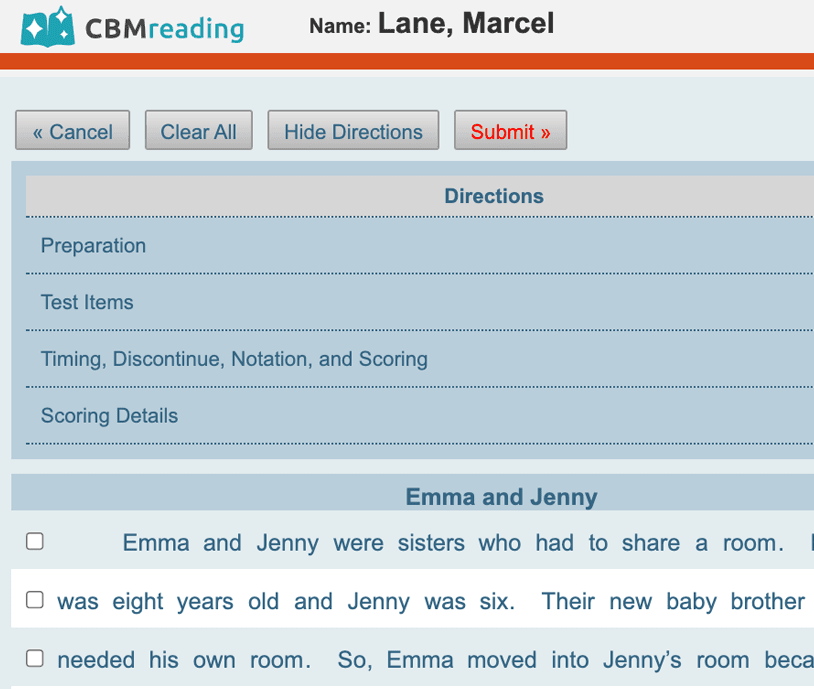
What is a CAT?
Universal screening with CAT is the first step in building an effective MTSS program. Based on Item Response Theory, FastBridge CAT adapts to students’ skill levels to reveal what they know or need to learn, and how to respond to meet learning goals. With CAT data, you can create an accurate measure of achievement and project student performance on high-stakes exams.
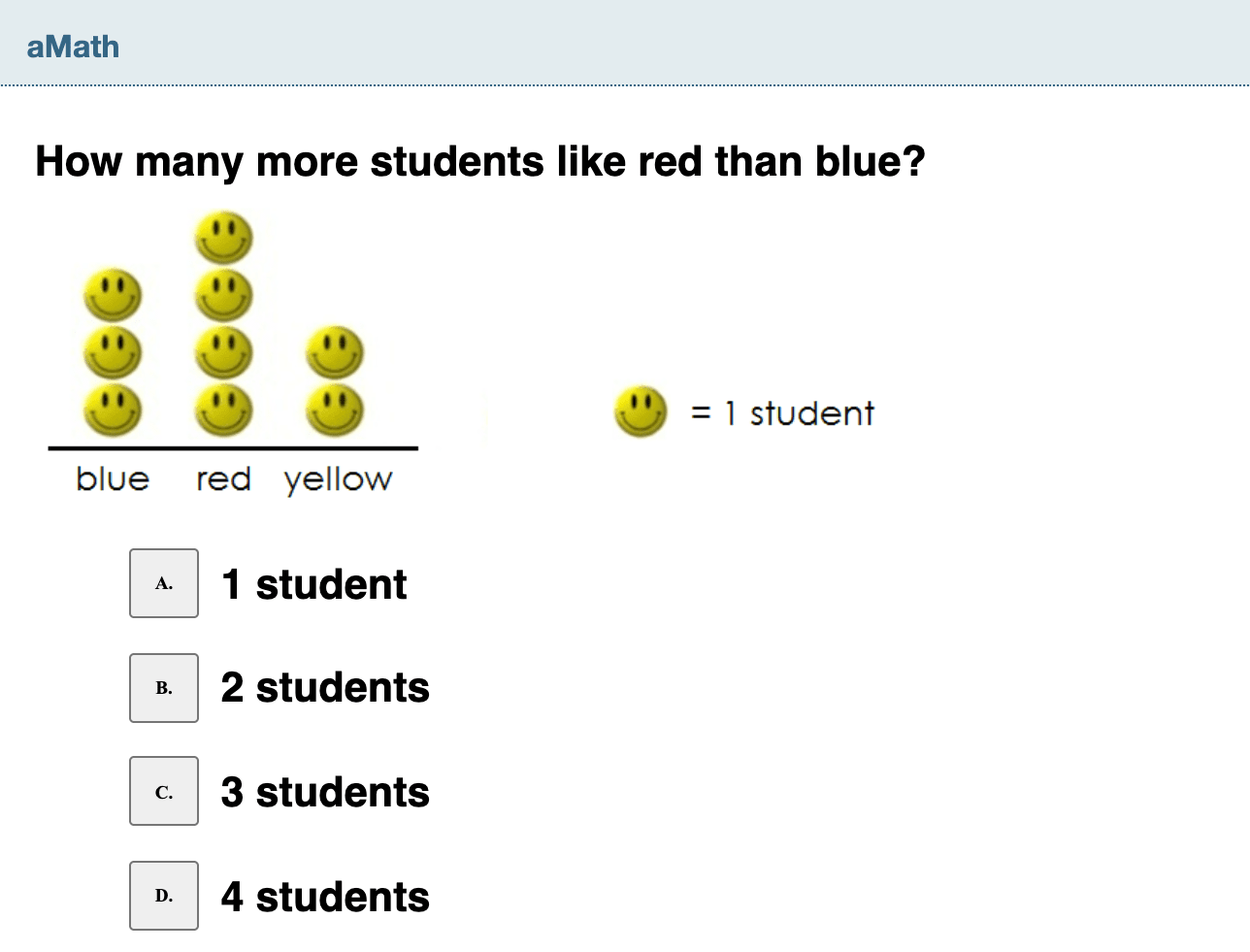
Reading
FastBridge offers universal screeners for reading that are grounded in the science of reading research. Our CBM and CAT reading assessments identify the specific literacy skills a student is struggling with and offer evidence-based recommendations on how to close skill gaps.
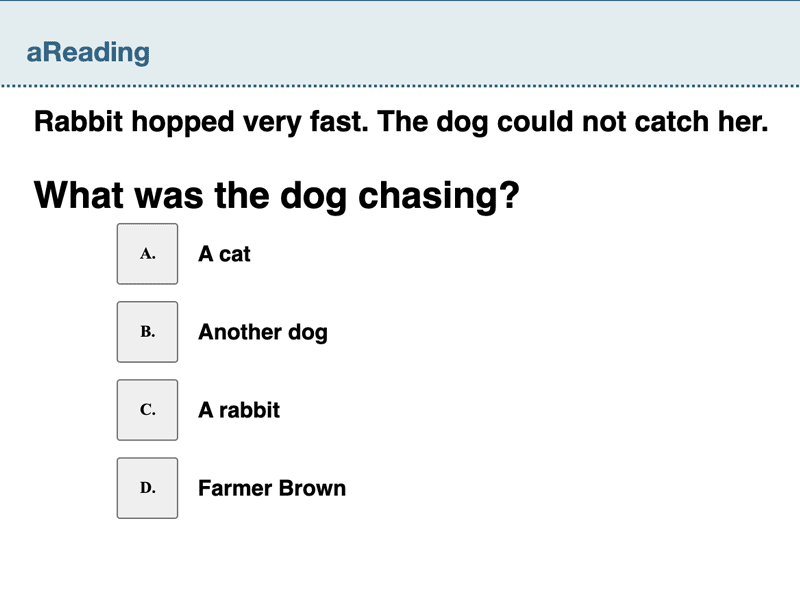
Math
Our universal screeners for math are based on the recommendations of the National Math Panel and the National Common Core Standards.
Our CBM and CAT math assessments provide educators with actionable data that help adjust core instruction and identify students who need additional math interventions.
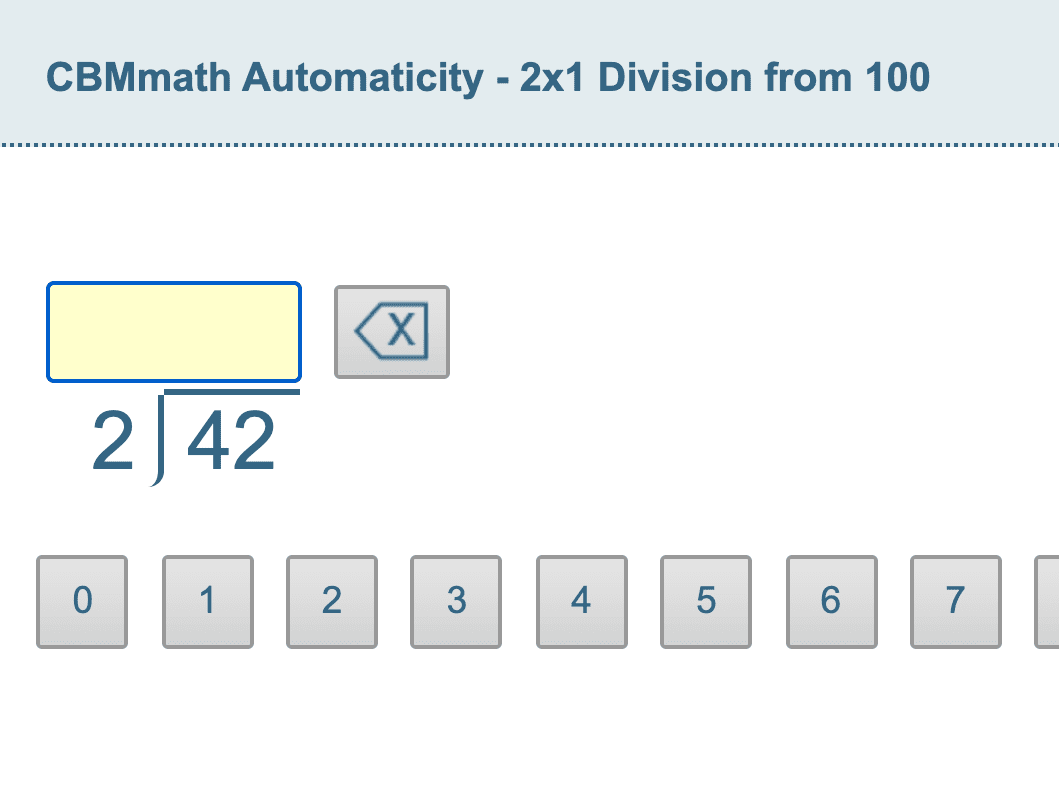
Social-Emotional Behavior (SEB)
FastBridge offers educators the only universal screener for social-emotional behavior that has been demonstrated to meet the psychometric criteria established by the National Center on Intensive Intervention for convincing evidence of reliability, validity, and diagnostic accuracy. Our universal screener has both a teacher rater and student rater report, creating a more accurate view of students’ SEB functioning.
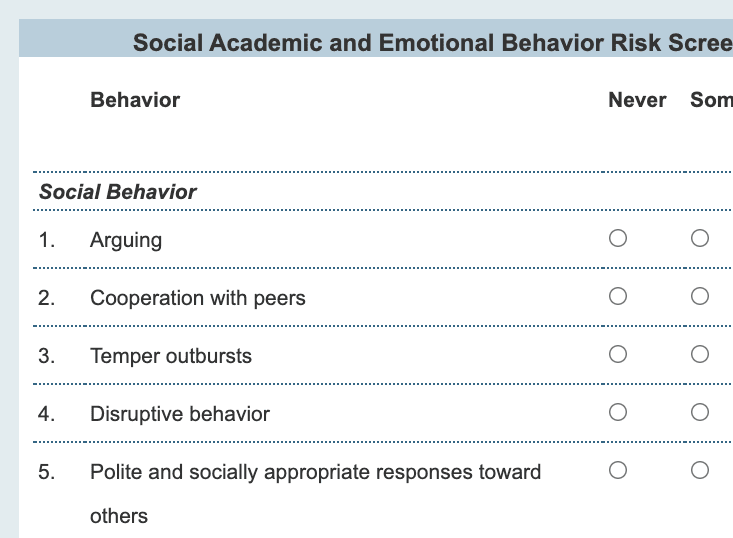
Data provided from universal screening can underscore systemic problems. Use FastBridge reports to make the decision-making process more intuitive and light.
- Learn more about our district, school and teacher-level reports. Preview FastBridge Reports
The Screening to Intervention (s2i) Report recommends specific class, small group, and individual student academic interventions, based on the data.
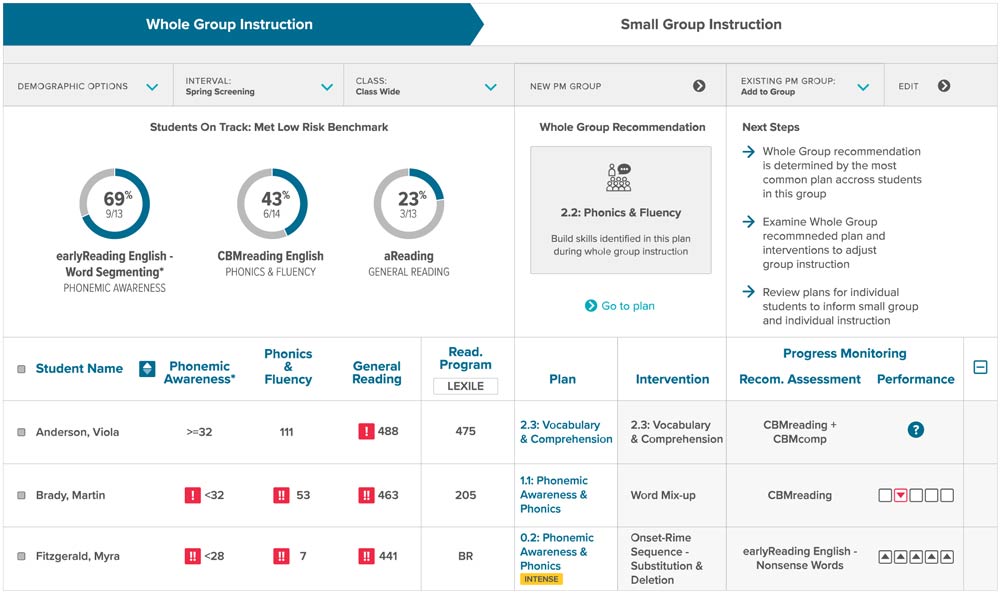
- Determine skill gaps
- Class/Grade recommendations
- Leveled reading program comparisons
- Individualized intervention and progress monitoring recommendations
Support all K-12 learners in your district with FastBridge’s universal screening tools, which are aligned to your state’s ELA and math learning standards, as well as Common Core State Standards Initiative.
Vlog
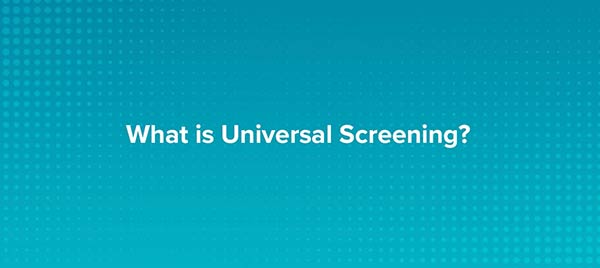
The Basics of Universal Screening
In this three-minute video, learn the purposes and uses of universal screening tools for academics and SEB and how to use screening data throughout the year.
Infographic
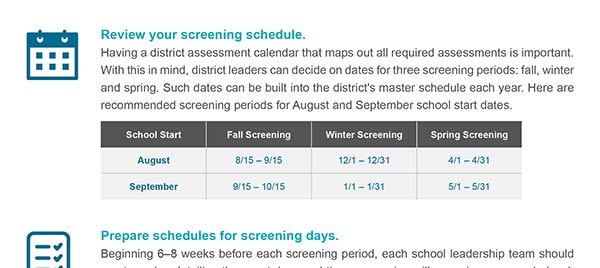
8 Steps to Make Screening Easier and More Effective
Learn eight simple steps you can complete prior to each universal screening period to ensure you get the most accurate data to inform instruction.
eBOOK

Universal Screening 101
Dive deeper into how universal screening fits into a comprehensive assessment system within a data-driven Multi-Tiered System of Support (MTSS).
Universal screening is the process of gathering academic and social-emotional behavior (SEB) data about all the students in a class, grade, school, or district to identify which students need additional support to meet student learning goals. Teachers use universal screening data to determine student readiness for Tier 1 core instruction and identify students who need additional instruction or intervention. Universal screening is an essential component of an effective multi-tiered system of support (MTSS).
The most common example of universal screening is a computer adaptive test (CAT) which identifies each student’s current instructional level in math or reading. When taking a CAT, each student starts with items at his or her grade level, but then the items adapt based on answers to prior questions. In this way, the assessment identifies each student’s current skill level. This means that students could be administered items at their grade level, above their grade level, and even below their grade level, depending on each individual item response.
Universal screening measures two important things:
- All students’ current skills as compared to grade level learning goals
- Individual students who might need additional instruction and if so, what type
Universal screening is a type of formative assessment that provides teachers with information about student readiness for instruction. By conducting screening three times a year, teachers have multiple opportunities to adjust instruction in relation to students’ needs. For students who are lacking key skills, teachers can use screening data alongside other information to determine what type of additional instruction makes sense.
It’s important that screening occurs periodically throughout the school year to regularly assess student performance. In this regard, screening provides formative data that helps teachers adjust instruction during the school year. Students do not always progress at the same rate. For example, students who perform adequately at the fall screening may show decreased growth at the winter screening period, indicating a need for instructional changes. We recommend conducting screening three times per year (fall, winter, and spring) for students in Kindergarten through fifth grade in the areas of math, reading, and social-emotional behavior. In middle school, screenings can be less frequent if other data show adequate student growth. In high school, typically universal screening is conducted only in ninth grade because there are other sources of information that teachers can use to plan instruction.
Teachers can use universal screening data to compare a child's academic and social-emotional behavior (SEB) data with school-based expectations for learning. Universal screening is similar to screenings that physicians conduct routinely. Just as blood pressure or body temperature checks are brief, easy, reliable indicators of overall health, academic and SEB screenings indicate the overall “health” of a school, class, or individual child. For students whose universal screening data indicate academic and social health, no additional steps are needed. For those whose screening scores indicate a problem, the teacher can gather additional information just as a physician does.
When selecting an assessment tool for use in academic and social-emotional behavior universal screening, educators should be careful to select a tool that is:
- developed through research and evidence-based;
- standardized, reliable, and valid;
- usable and feasible; and
- appropriate for use in school settings.
Yes, universal screening can be accomplished with remote learning. The primary benefit to conducting universal screening during remote learning is having continuous data about all students for the school year. Such data can help to inform student learning needs when students return to in-person learning. When possible, we recommend using computer-administered assessments during an online session so that the teacher can observe students and answer any questions. Doing so will allow for ongoing data collection with limited effects from a new testing environment, and they are the easiest and most reliable assessments for both students and teachers to use.

